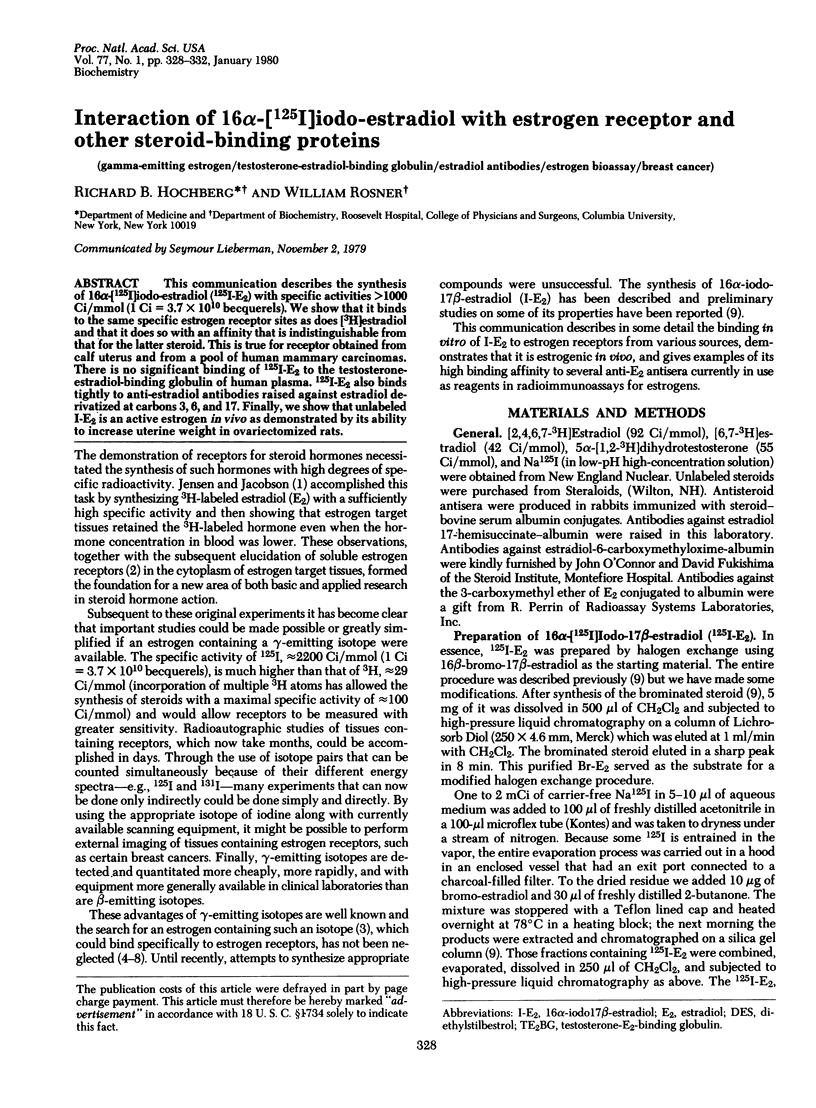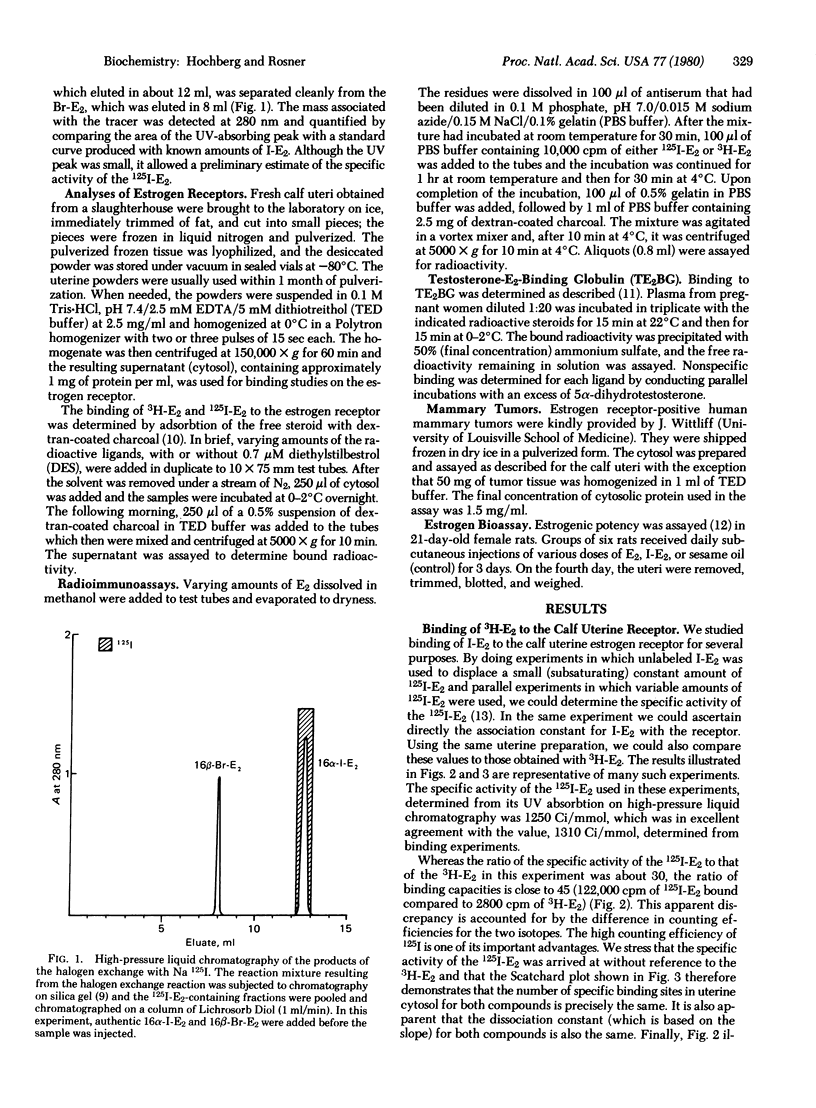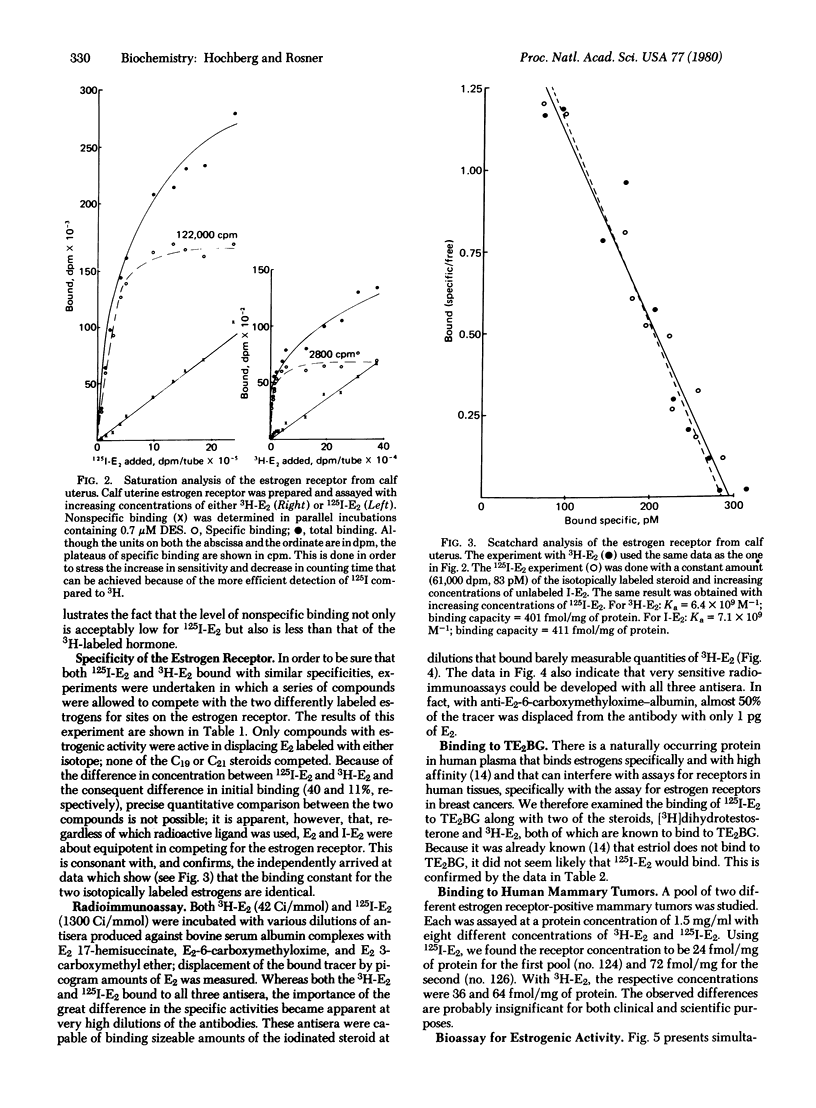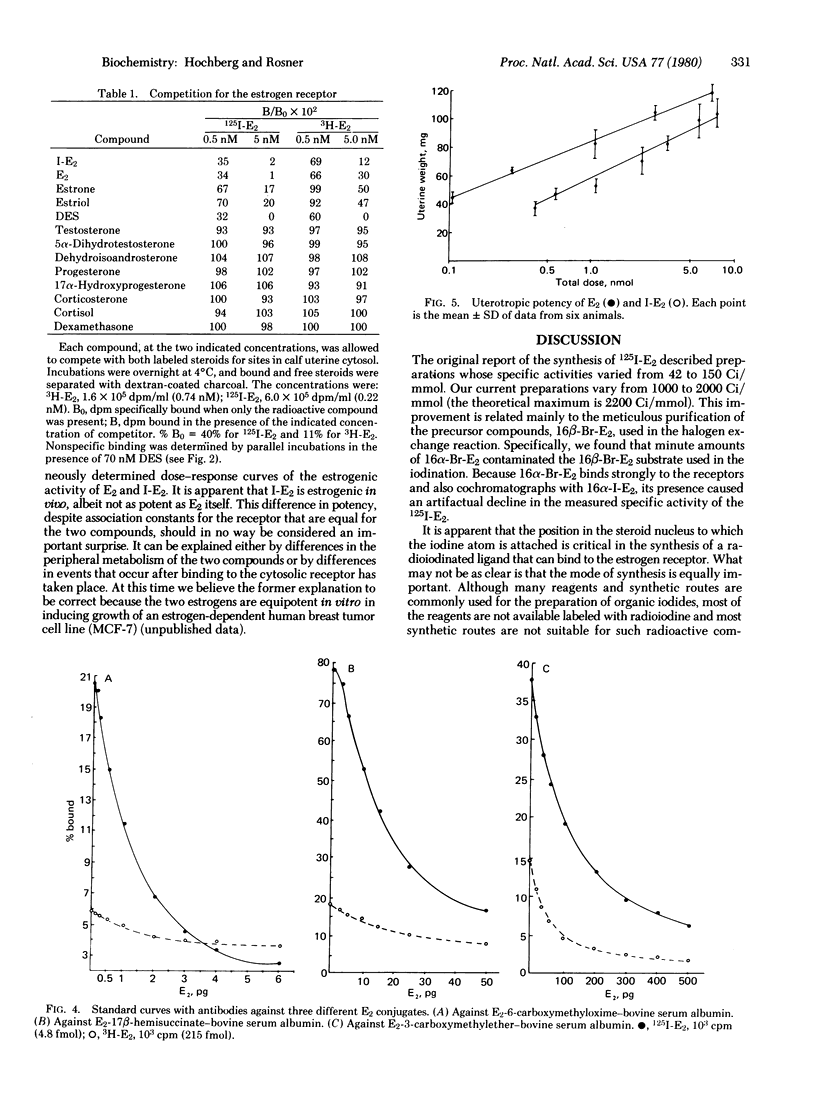Abstract
This communication describes the synthesis of 16 alpha-[125I]iodo-estradiol (125I-E2) with specific activities greater than 1000 Ci/mmol (1 Ci = 3.7 x 10(10) becquerels). We show that it binds to the same specific estrogen receptor sites as does [3H]estradiol and that it does so with an affinity that is indistinguishable from that for the latter steroid. This is true for receptor obtained from calf uterus and from a pool of human mammary carcinomas. There is no significant binding of 125 I-E2 to the testosterone-estradiol-binding globulin of human plasma. 125I-E2 also binds tightly to anti-estradiol antibodies raised against estradiol derivatized at carbons 3, 6, and 17. Finally, we show that unlabeled I-E2 is an active estrogen in vivo as demonstrated by its ability to increase uterine weight in ovariectomized rats.
Full text
PDF




Selected References
These references are in PubMed. This may not be the complete list of references from this article.
- Arunachalam T., Longcope C., Caspi E. Iodoestrogens, syntheses, and interaction with uterine receptors. J Biol Chem. 1979 Jul 10;254(13):5900–5905. [PubMed] [Google Scholar]
- Counsell R. E., Buswink A., Korn N., Johnson M., Ranade V., Yu T. Radioiodinated estrogens and antiestrogens as potential imaging agents. Curr Top Mol Endocrinol. 1976;4:107–113. doi: 10.1007/978-1-4684-2601-4_9. [DOI] [PubMed] [Google Scholar]
- Hochberg R. B. Iodine-125--labeled estradiol: a gamma-emitting analog of estradiol that binds to the estrogen receptor. Science. 1979 Sep 14;205(4411):1138–1140. doi: 10.1126/science.472733. [DOI] [PubMed] [Google Scholar]
- Katzenellenbogen J. A., Hsiung H. M., Carlson K. E., McGuire W. L., Kraay R. J., Katzenellenbogen B. S. Iodohexestrols. II. Characterization of the binding and estrogenic activity of iodinated hexestrol derivatives, in vitro and in vivo. Biochemistry. 1975 Apr 22;14(8):1742–1750. doi: 10.1021/bi00679a029. [DOI] [PubMed] [Google Scholar]
- Katzenellenbogen J. A., Hsiung H. M. Iodohexestrols. I. Synthesis and photoreactivity of iodinated hexestrol derivatives. Biochemistry. 1975 Apr 22;14(8):1736–1741. doi: 10.1021/bi00679a028. [DOI] [PubMed] [Google Scholar]
- Komai T., Eckelman W. C., Johnsonbaugh R. E., Mazaitis A., Kubota H., Reba R. C. Estrogen derivatives for the external localization of estrogen-dependent malignancy. J Nucl Med. 1977 Apr;18(4):360–366. [PubMed] [Google Scholar]
- Korenman S. Use of receptor proteins for steroid-hormone assays. Methods Enzymol. 1975;36:49–52. doi: 10.1016/s0076-6879(75)36006-0. [DOI] [PubMed] [Google Scholar]
- Rosenbaum W., Christy N. P., Kelly W. G. Electrophoretic evidence for the presence of an estrogen-binding beta-globulin in human plasma. J Clin Endocrinol Metab. 1966 Dec;26(12):1399–1403. doi: 10.1210/jcem-26-12-1399. [DOI] [PubMed] [Google Scholar]
- Rosner W. A simplified method for the quantitative determination of testosterone-estradiol-binding globulin activity in human plasma. J Clin Endocrinol Metab. 1972 Jun;34(6):983–988. doi: 10.1210/jcem-34-6-983. [DOI] [PubMed] [Google Scholar]
- Roulston J. E. Validation of the self-displacement technique for estimation of specific radioactivity of radioimmunoassay tracers. Ann Clin Biochem. 1979 Jan;16(1):26–29. doi: 10.1177/000456327901600104. [DOI] [PubMed] [Google Scholar]
- Toft D., Gorski J. A receptor molecule for estrogens: isolation from the rat uterus and preliminary characterization. Proc Natl Acad Sci U S A. 1966 Jun;55(6):1574–1581. doi: 10.1073/pnas.55.6.1574. [DOI] [PMC free article] [PubMed] [Google Scholar]


